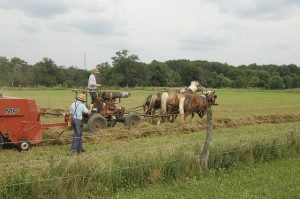The call of the open road resonates deeply with the spirit of adventure, inviting travelers to explore the vast and varied landscapes of the United States. From the sunny roads of California to the historic lanes winding through New England, each journey offers a unique weave of experiences, landscapes and cultures. However, the joy of driving in this majestic land comes with the responsibility of understanding its laws and quirks. The USA, a country where every turn presents a new story, requires a certain savoir-faire behind the wheel. Whether you're winding through the busy streets of New York City or cruising along the scenic roads of the Pacific Northwest, mastering the art of driving in the USA is an essential chapter in your travel story.Going on a car adventure in the United States promises a journey of discovery and pleasure. However, to truly conquer the roads and uncover America's heartland, a driver must navigate more than just the physical highways. This investigation requires a thorough understanding of the rules of driving, an appreciation of the language of road signs and a strict adherence to safety. Let's get ready for an enlightening journey full of practical tips and spicy advice, designed to improve your driving experience as you cross the diverse terrains of the United States. Welcome to the ultimate guide to driving in the USA - where every turn is a story waiting to unfold.The United States offers a vast array of landscapes, making it a dream destination for driving enthusiasts. From the sunny beaches of California to the majestic mountain ranges of Colorado, each state presents its own unique set of driving experiences and challenges. However, the thrill of navigating this diverse terrain comes with the responsibility to understand and adhere to the driving rules and road signs that govern America's highways. Whether you're cruising along historic Route 66 or navigating the busy streets of New York City, observing local driving regulations is key to a safe and enjoyable ride. This guide is designed to equip you with proven tips for driving in the United States, ensuring you can confidently conquer the roads and embrace the freedom of American driving.
Before the trip:
- Driving License: Make sure you have a valid international driver's license in addition to the Israeli license.
- Insurance: Purchase appropriate car insurance for the trip, which includes comprehensive and third party insurance.
- Car Rental: Book a car in advance, especially if you are traveling during the tourist season. Pay attention to the size of the vehicle and its specifications (for example, gearbox).
- Maps: Download offline maps of the area you will be traveling in, or use a navigation app like Waze or Google Maps.
- traffic laws: Read about the traffic laws in the United States, as they differ from the traffic laws in Israel. Pay particular attention to the laws of priority, permitted speed, prohibition of turning right at a red light and more.
During the trip:
- Driving on the right side: Remember to drive on the right side of the road.
- Speed limits: Note the speed limits that change and can be relatively low.
- Traffic signs: Pay attention to the signs and traffic lights.
- alertness: Be alert to other drivers, pedestrians and cyclists.
- tiredness: Do not drive when you are tired. Stop to rest every few hours.
- Weather: Pay attention to the weather conditions, and in case of severe weather, consider postponing the trip.
Additional tips:
- Use PKL: Make sure you have a proper kit in the car, which includes water, food, a first aid kit and more.
- Mobile Phone: Make sure you have a charged mobile phone with you, in case of emergency.
- Music: Prepare a playlist of music that will motivate the trip.
- Views: Stop every now and then and enjoy the beautiful views of the United States.
parking:
- Public parking lots: Look for public parking lots or store parking lots. Pay attention to the prices and the allowed parking time.
- Meters: Pay attention to the allowed parking time and pay accordingly. You can pay by cash, credit card or app.
- Prohibitions: Avoid parking in prohibited places, such as handicapped parking, emergency areas, or on the sidewalk.
- Signage: Pay attention to the signs regarding parking, such as "parking is permitted for ticket holders only" or "limited parking for a short time".
driving:
- right side: Remember to drive on the right side of the road.
- speed: Note the speed limits that change and can be relatively low.
- Traffic signs: Pay attention to the signs and traffic lights.
- Turn left: In most places, turning left is only allowed when the traffic light is green. Pay attention to special signs that allow turning left at a red light after a complete stop.
- alertness: Be alert to other drivers, pedestrians and cyclists.
- tiredness: Do not drive when you are tired. Stop to rest every few hours.
- Weather: Pay attention to the weather conditions, and in case of severe weather, consider postponing the trip.
Driving rules:
- license: Make sure you have a valid international driver's license in addition to the Israeli license.
- Insurance: Purchase appropriate car insurance for the trip, which includes comprehensive and third party insurance.
- Maps: Download offline maps of the area you will be traveling in, or use a navigation app like Waze or Google Maps.
- traffic laws: Read about the traffic laws in the United States, as they differ from the traffic laws in Israel. Pay particular attention to the laws of priority, permitted speed, prohibition of using a mobile phone while driving and more.
Alcohol:
- driving under the influence: Absolutely forbidden. Pay attention to the permissible blood alcohol limit, which is relatively low.
- Taxis: If you have been drinking alcohol, use taxis or other transportation services.
Booster:
- Children: Children under the age of 8 must be belted in an appropriate safety seat.
- Rules: Child safety laws vary between countries, so it is important to check the laws in the country you are traveling to.
Fuel prices:
- Prices: Gas prices in the United States vary by state and city.
- gas stations: You can find many gas stations along the roads.
- Apps: Apps like GasBuddy can be used to find the gas stations with the lowest prices.
Left turns are allowed on red in California
Unlike Israel, turning left is allowed on a red light in most places in California, under certain conditions:
Conditions:
- Absolute stop: You must come to a complete stop before the stop line.
- Free movement: You must make sure there is no traffic in front, including pedestrians and cyclists.
- green Arrow: You must wait for a green click intended for left-handers before turning.
- Traffic signs: Pay attention to special signs that prohibit turning left at a red light.
it's important to remember:
- Turning left at a red light is only allowed in places where there is no designated green traffic light for turning left.
- You must drive very carefully and make sure that the turn can be made safely.
- Other drivers may not expect you to turn left at a red light, so you need to be extra alert.
Cases in which turning left on red is prohibited:
- In places where there is a dedicated green traffic light for turning left.
- In places where there is a sign prohibiting turning left at a red light.
- When there is traffic opposite, including pedestrians and cyclists.
- When the weather conditions are difficult and make it difficult to see.
Turning left at a red light is allowed in most places in California, but it must be done very carefully and only after making sure there is no danger.
Mastering the art of turning left
Turning left at intersections, especially in busy urban areas of the United States, can be a daunting task for many drivers, experienced or novice. The challenge lies not only in managing the vehicle but also in navigating the complex dance of oncoming traffic and pedestrians' right of way. Unlike some of the traffic maneuvers, left turns require an intelligent combination of timing, patience and assertive action. A basic rule for turning left at a traffic light is yielding to the approaching traffic. This means patiently waiting for a safe gap in the oncoming traffic stream before making your turn. Additionally, where a designated left turn arrow is not provided, drivers must rely on their own judgment to find safe turning opportunities. Besides, when turning left at an intersection without traffic lights, the rule of thumb is to yield to all approaching vehicles and pedestrians, and make sure their way is clear before turning. Another critical aspect to remember is the potential presence of pedestrians. Here, drivers must be doubly careful, ensuring not only the safety of their maneuver against vehicular traffic, but also keeping every pedestrian crossing the designated lane. Significantly, understanding and mastering these nuances of left turns can significantly improve US driving skill, as we will also explore how understanding road signs and signals plays an integral part in navigating these challenges.Traffic navigation and driving manners
The smooth flow of traffic on the busy roads of the United States depends on mutual understanding and respect for the rules of driving. Mastering this fine art is essential for anyone behind the wheel, as it ensures not only your safety but also that of others on the road. An integral part of these rules of conduct involves mastering the skill of merging onto highways – a task that may seem daunting at first. It is essential to match your speed to the flow of traffic before merging, signal your intention well in advance and smoothly transition into the lane. Furthermore, understanding the right of way and maintaining a safe following distance cannot be overemphasized. Patience and courtesy must be your constant companions, especially in scenarios where you have to give way to pedestrians or when navigating intersections. It is these unspoken rules that contribute to a harmonious driving environment. As noted earlier in the discussion of left turns, the emphasis on safety and courtesy extends to all aspects of driving in the United States, ensuring a pleasant experience for all road users.Decoding road signs and signals
The ability to understand and respond appropriately to road signs and signals is a cornerstone of safe driving in the United States. From the busy streets of New York City to the wide highways that criss-cross the Midwest, drivers are constantly confronted with a variety of signs and signals designed to guide, warn, and regulate the flow of traffic. Speed limit signs, for example, mark the maximum speed allowed in a certain area and are of paramount importance in maintaining on road safety. In contrast, stop signs require a full stop at intersections, giving pedestrians the right of way and crossing traffic. These, along with yield signs, which advise drivers to slow down and give way to others, are essential to preventing accidents and ensuring a smooth flow of traffic. Furthermore, drivers must be attuned to warning signs that signal imminent dangers such as sharp turns, school zones or wildlife crossings. Recognizing and responding to these signs not only protects the driver and passengers, but also protects other road users. In addition, understanding the signals, starting with the basic red, yellow, and green traffic lights and ending with more advanced indications such as crosswalks and lane usage signs, is essential for navigating intersections and effectively complying with traffic laws. When we discuss maintaining safety and sobriety in the upcoming section on alcohol and driving, it becomes clear that road signs and signals in the form Accurate is an instrumental part of responsible driving and avoiding unnecessary risks on the road.Staying Safe and Sober: Alcohol and Driving
In the vibrant fabric of the American driving experience, the topic of alcohol and driving weaves a cautionary thread. The United States takes a tough stance against impaired driving, with each state setting legal blood alcohol concentration (BAC) limits, usually at 0.08% or less. The meaning of driving under the influence (DUI) extends far beyond a mere traffic offense, and includes serious legal consequences, financial burden, and worst of all, the potential for tragic accidents. The data is sobering, with alcohol-related incidents accounting for a significant percentage of road fatalities each year. To navigate this landscape responsibly, it is extremely important to understand the limitations and the abundance of alternative transportation options available, from ride-sharing apps to traditional taxi services. Designating a sober driver or planning a safe route home before drinking alcohol can be life-saving decisions. This approach not only protects you and your loved ones, but also extends a hand of consideration to other road users. Remember, incorporating these awareness practices into your driving ethos echoes the basic principles of road safety discussed in various topics, including the importance of following driving rules and traffic signs.Improving your driving experience
Improving your driving journey across the vast landscapes of the United States isn't just about mastering maneuvers or deciphering road signs. An equally essential aspect of an unforgettable road trip is optimizing your vehicle's performance and ensuring a comfortable ride. Regular checks of your car's vital functions, such as oil levels, braking performance and tire pressure, can greatly extend its lifespan and make your journeys worry-free. Furthermore, staying on top of changing fuel prices can prove to be a game-changer for your budget, especially when traveling long distances. Applying fuel-saving techniques – such as maintaining a constant speed, minimizing idle time and properly planning your routes to avoid areas Crowded - can significantly reduce your travel costs. Remember, as discussed in previous sections on driving etiquette and road safety, the essence of a satisfying driving experience also lies in how you smoothly adapt to changing driving conditions and respect other road users. The key is a balance between preparedness and adaptability, ensuring that every kilometer driven is a step towards an enriching driving adventure.
How many people watched last week: 381



















